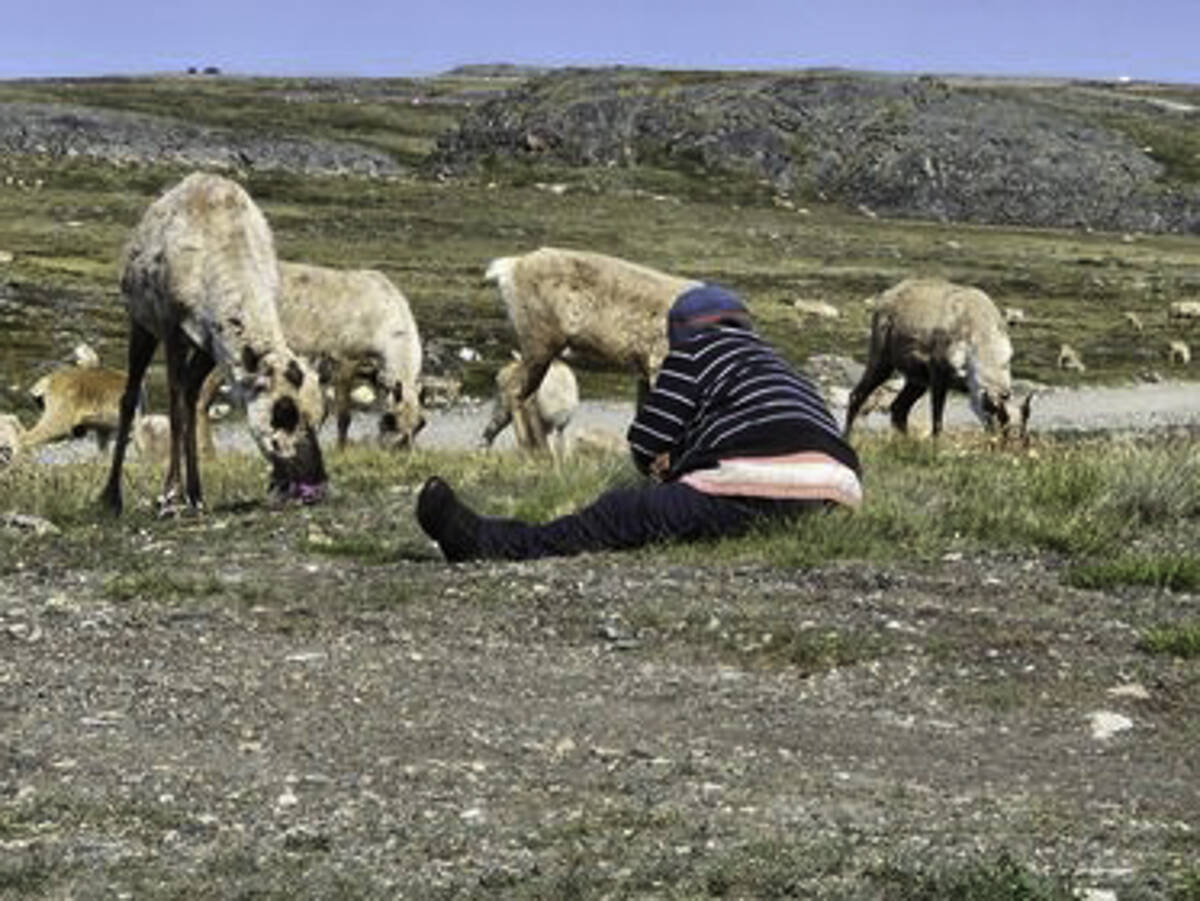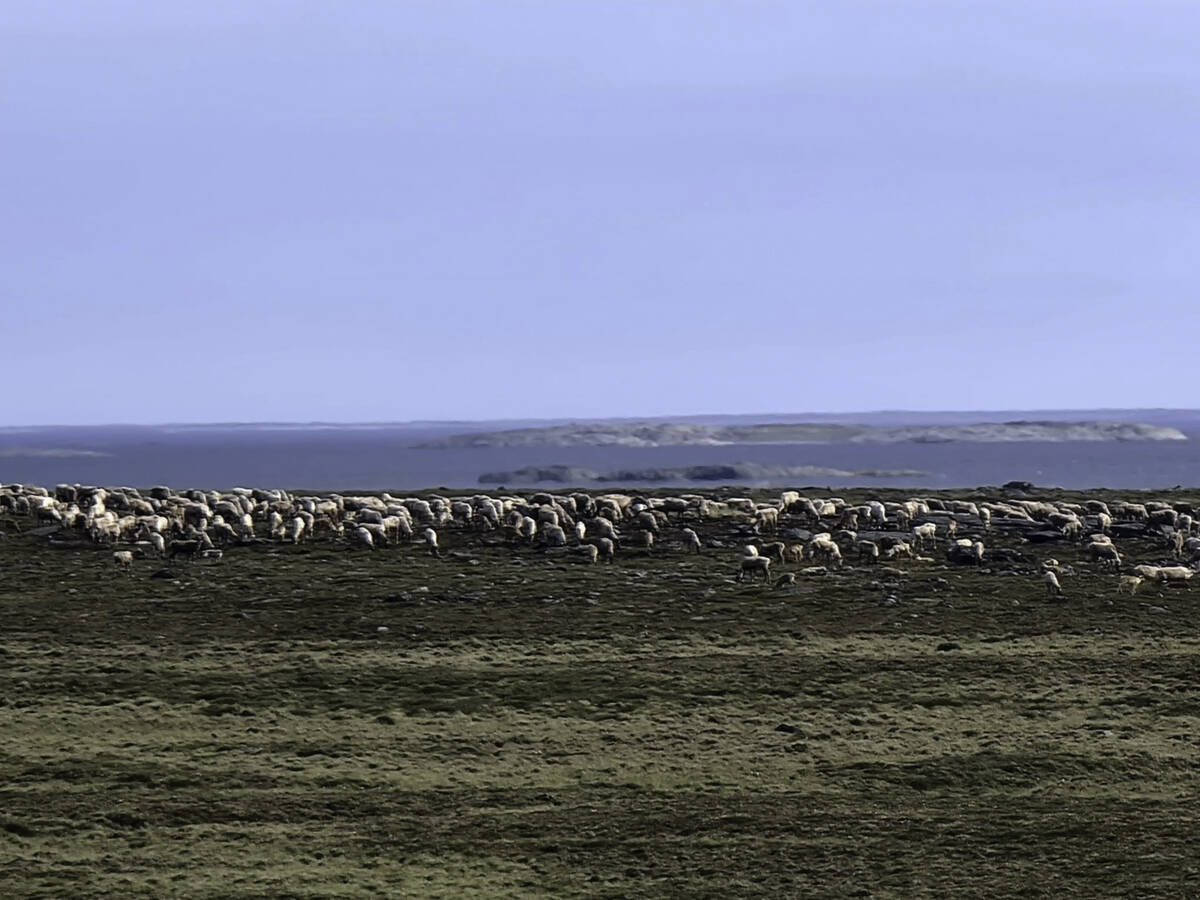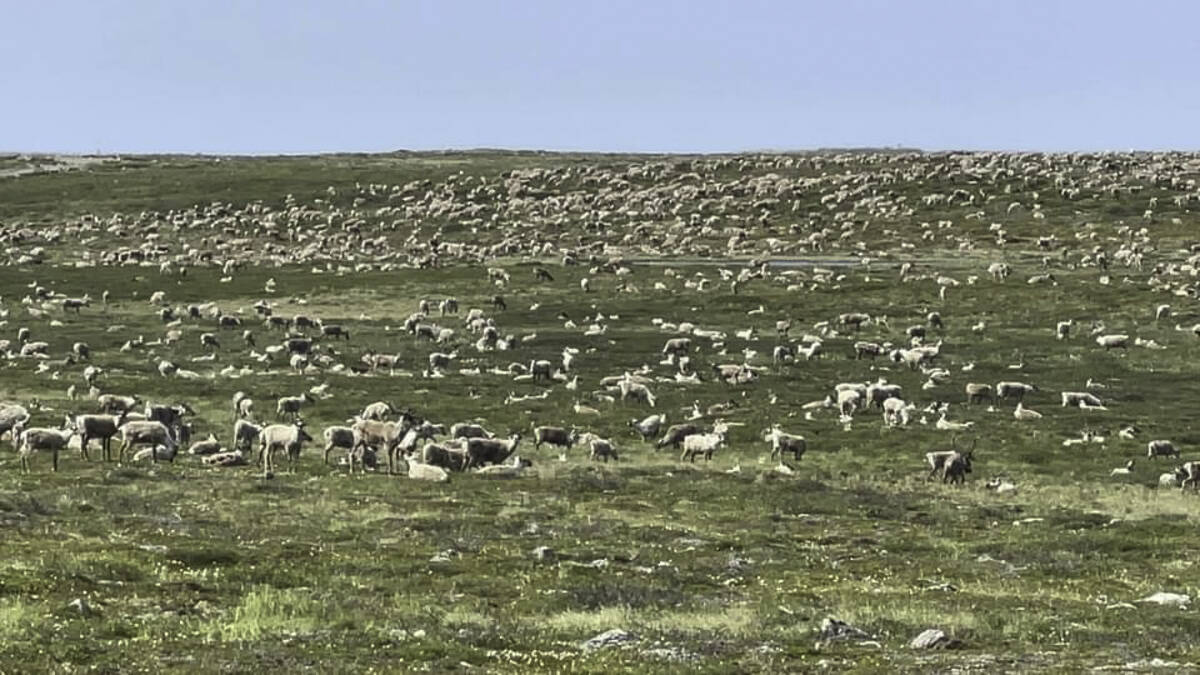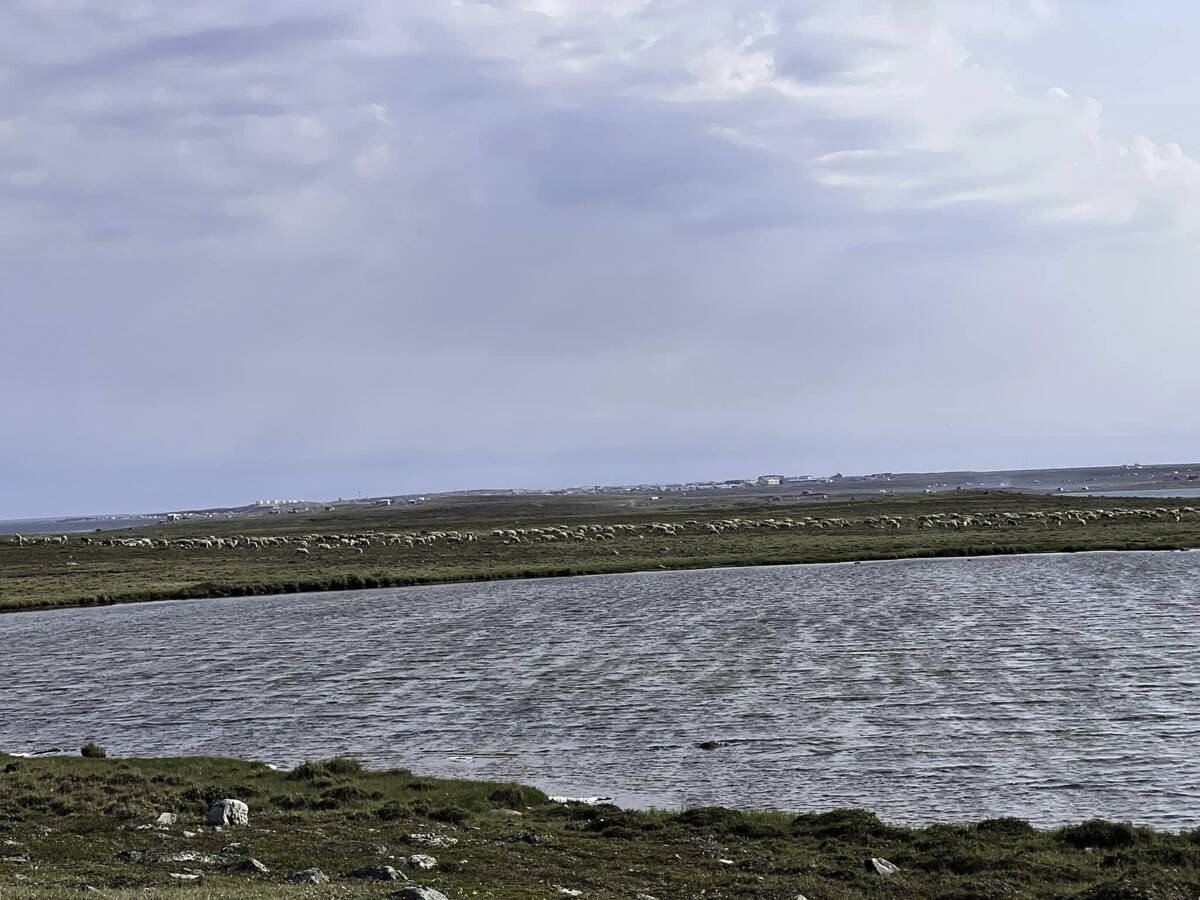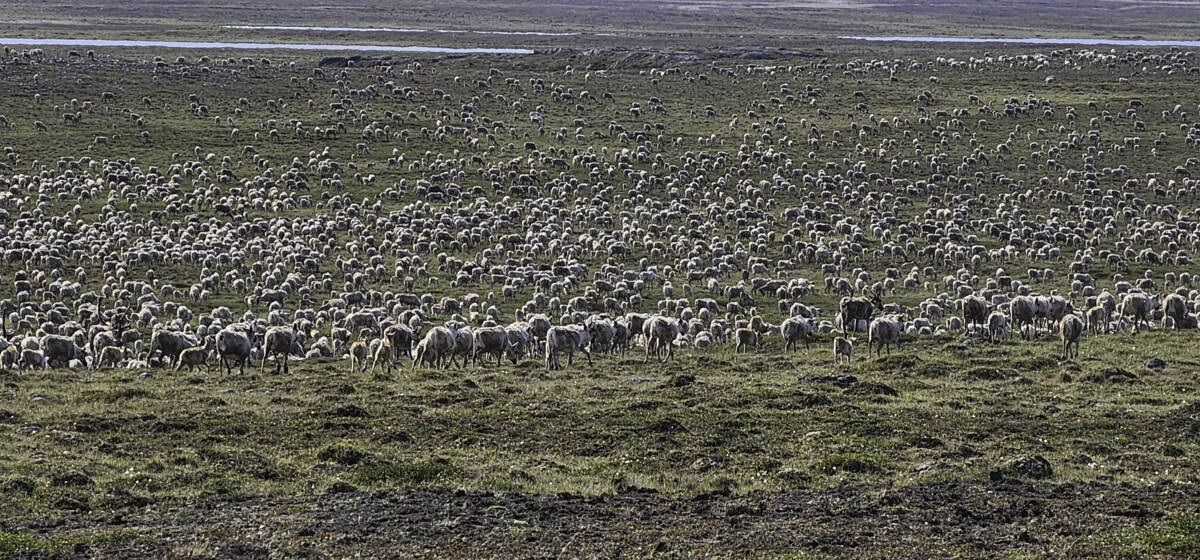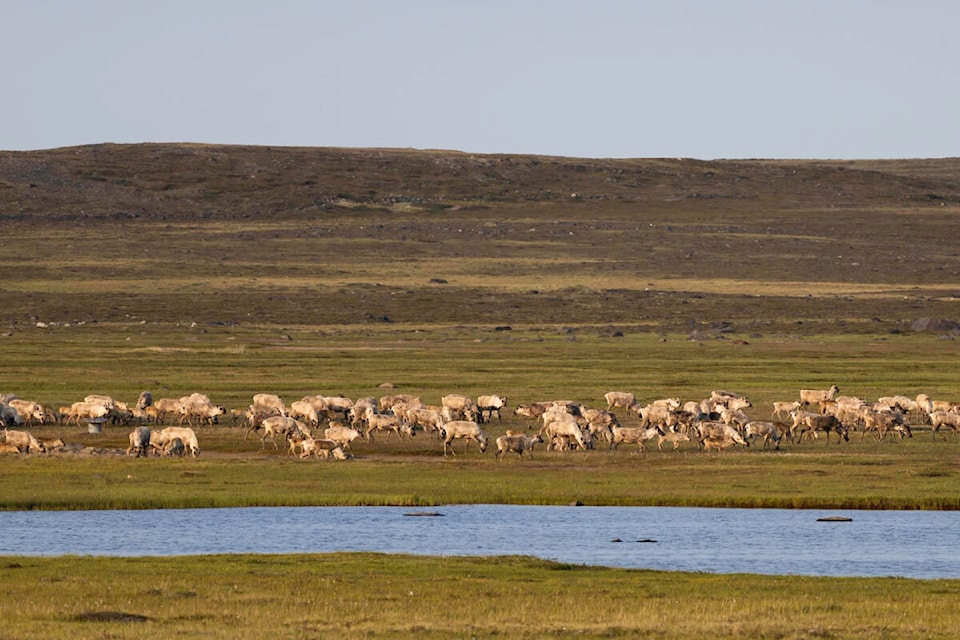When Arviat residents Mary and Tony Phinney heard that caribou were pushing through near Arviat last week, they hoped they might get to see them. But at first they couldn’t find them.
“My husband and I had decided to go for a drive up towards Magoose Road to see if there were any around,” recalled Mary. “We were ready to head back until Tony stopped the bike to see what I thought were rocks. Lo and behold, it was a large herd of caribou who were pushing through and had been in the area, sleeping on the road.”
The couple sat in amazement for two and a half hours watching the animals, part of the Qamanirjuaq herd, grazing the tundra as more and more poured in from the hills.
“It was awe inspiring,” said Mary, who recorded a video of the thousands of caribou right in front of her. “We didn’t disturb them too much, as we thought it may distract them from their migration path. There had to have been thousands – truly a moment that neither of us will ever forget.”
She and Tony have been living in Arviat for 15 years. She said the animals have come close to town before, but some years they are much more elusive.
“It’s feast or famine,” said Mary about the herd’s migration paths. “One can certainly understand the struggles or triumphs of trying to feed a family.”
She felt blessed by the close encounter this summer.
The special visitors didn’t just drop in on Arviat this year. Rankin Inlet’s social media was buzzing with photos and videos too, as the herd passed by the mine road just a few minutes out of town.
Elder Adele Angidlik got a front-row seat, as she sat on the tundra watching caribou pass within feet.
She was in “heaven” during that time, ecstatic to be close enough to hear the animals breathe.
The Qamanirjuaq number in the hundreds of thousands, with the last survey estimating 285,000 – the biggest caribou herd in the world. They are often seen passing through Rankin Inlet, Arviat, Chesterfield Inlet and Whale Cove as they make their way to Qamanirjuaq Lake to calve.
The herd then migrates south toward Henik Lake for the rut, wintering in the Manitoba, Saskatchewan and Northwest Territories border area before returning to the calving ground in spring.
![]()
